30 Aggressive Dog Breeds People Swear Are Sweet, But The Bite Stats Disagree
When you purchase through links on our site, we may earn a commission. Here’s how it works.
Let’s get one thing straight: Pit Bulls aren’t the only dogs with an occasional attitude problem. Some of the most aggressive dog breeds out there are small enough to fit in a tote bag.
Table of Contents
From ankle-high rage rockets to banned giants, this list breaks down the breeds most often linked to serious bites, behavior issues, and bad reputations, with more nuance than noise.
Forget what you’ve heard. These are the names that keep surfacing in bite reports, insurance claims, and vet tech nightmares.
7 Eye-Opening Dog Bite Statistics in the U.S.
1. You’re ~1 in 50,000 likely to die from a dog attack. According to the National Safety Council, as of 2023, roughly 30–50 fatal dog attacks occur yearly. This is less than 0.01% of total dog bite incidents.
2. About 4.5 million Americans are bitten by dogs every year. The World Health Organization also states that some studies show this accounts for 76–94% of animal bite injuries.
3. Since 2016, at least 83 different breeds (including mixed breeds) have been responsible for fatal dog attacks. These include Akitas, Boxers, Dachshunds, Dalmatians, Doberman Pinschers, German Shepherds, Great Danes, Huskies, Labs, Mastiffs, Pitbull-type dogs, and many others.

4. Some breeds cause more serious injuries than others. And it’s not who you think! According to a study of vet stats, American Bulldogs, Dalmatians, Dachshunds, English Bulldogs, and Lhasa Apsos rank among the top for severity of bite injuries.
5. U.S. insurers paid $1.12 billion in dog-related injury claims in 2023. This figure from the Insurance Information Institute highlights the significant financial impact of dog bites and the importance of preventative measures.
6. Over 6,000 USPS workers were attacked by dogs in 2024. According to USPS, this figure is up ~200 from 2023, with California alone reporting 701 attacks, costing an average of $64,500 per incident.
7. Chained dogs are involved in 25% of fatal attacks. According to Fatal Dog Attacks, this is common across all dog breeds, as restraint frustration is a significant risk factor.
Is There Even a Test for “Aggressive Dog Breeds”?
Here’s the truth most clickbait lists won’t tell you: there’s no official aggression score or universal “danger rating” for dog breeds. There’s no test that slaps a number on a dog’s temper, and no global ranking that says which breed is the absolute meanest.
So why do we talk about “aggressive dog breeds” at all?
Because behavior patterns, dog bite reports, breed-specific legislation, and anecdotal experience still tell a story. It’s not about blaming certain dogs. It’s about recognizing tendencies that might require more training, more care, or more understanding.
We’re not here to say this breed is bad and that one is good. What we are here to do is explore:
- Which breeds get labeled as aggressive most often
- Which ones show up in bite reports, lawsuits, or bans
- And which “family dogs” may have surprising behavioral red flags
This list is meant to inform, not accuse. And by the end, you might be more surprised than you are now after reading those shocking stats…
Let’s look at the most likely breeds to be labeled as “dangerous” or “aggressive.”
14 Scary-Looking Giants
Big dogs, big reputations, and in some cases, big problems.
These breeds often look intimidating and are the first to get blamed when aggression is mentioned. But size isn’t everything. With the right leadership, many are loyal protectors. Without it? They’re headline material.
1. Akita
Akitas are known for being very independent dogs. They are a dominant and powerful breed that needs a skilled and experienced owner to guide them. Without proper structure, an Akita is likely to lash out, sometimes aggressively.
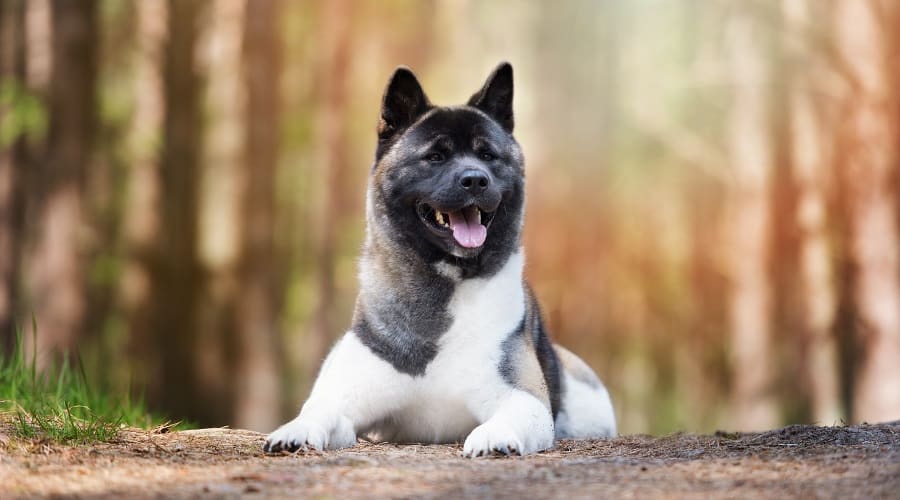
Due to their dominant personalities, Akitas are known to pick fights with other dogs of the same sex. It is not recommended that owners keep two Akitas of the same sex for this reason.
However, some may find it surprising that Akitas are actually known for being very gentle with children and can make wonderful and protective family companions. It is still not recommended to leave an Akita with children unattended, especially young kids.
However, in the right environment, Akitas are sure to be devoted to your family and a loyal protector.
2. American Bully
The American Bully might look like a Pit Bull on steroids, but this breed was actually developed to be more companion-oriented and stable in temperament. A mix of American Pit Bull Terrier, American Bulldog, and other bully breeds, the American Bully was bred for loyalty, strength, and a calm demeanor, especially around families.
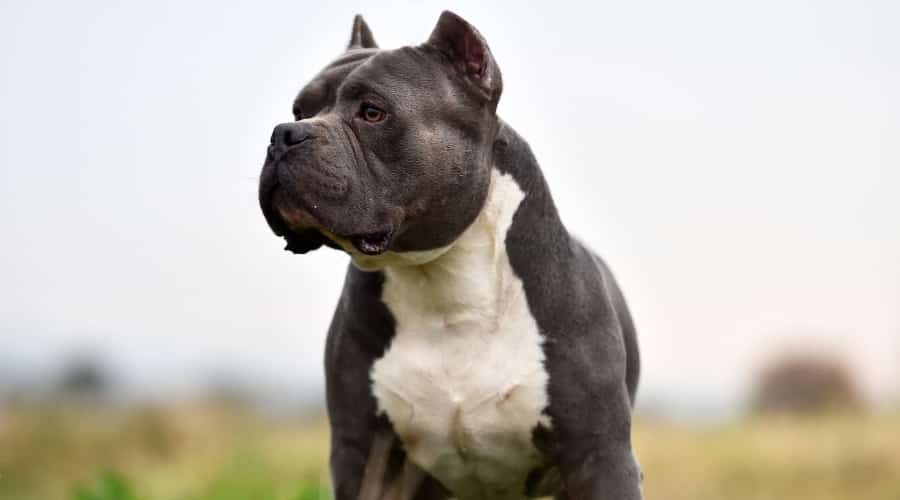
That said, their stocky build, wide stance, and intimidating appearance often get them lumped into the “dangerous dog” debate, whether they deserve the label or not.
Proper socialization and structure usually produce a confident, affectionate dog. But when bred irresponsibly, under-exercised, or poorly trained, these dogs can develop reactivity or territorial issues, especially in their larger variants.
In recent years, the breed has faced renewed scrutiny in countries like the UK after several high-profile attacks, leading to bans and public outcry. Still, in the U.S., many owners swear by the breed’s loving nature, proving once again that behavior isn’t just about the breed. It’s about the leash holder.
3. American Pitbull Terrier
Pitbull Terriers have a bad reputation. They were once considered the “nanny dog” by many families in the United States during the mid-1900s after World War II. They fought with soldiers during the war and were considered to be great family protectors.
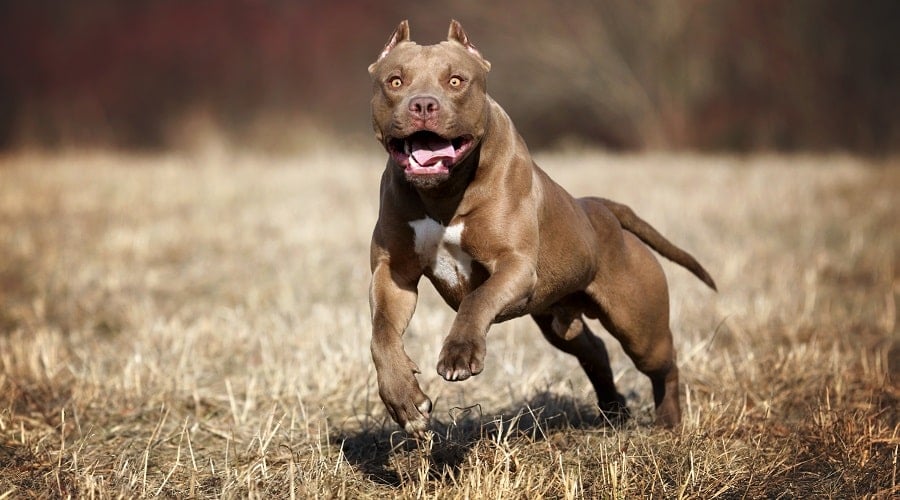
There are actually four different types of dogs that fall into the Pitbull breed family, which gives more opportunity for something bad to be attributed back to this misunderstood breed. It’s not uncommon that many mixed Pitbull breeds are classified as purebred Pitbulls after an attack.
Despite many insurers having a problem with this breed, they can be some of the sweetest dogs you’ll ever meet. Unfortunately, many bad humans have given them a poor reputation by teaching bad behavior habits and dogfighting.
These irresponsible owners have unfortunately caused a lot of harm to a very sensitive breed. Because there are so many fatalities attributed to this breed, they make the list of the most aggressive dog breeds.
We do feel that, regardless of this “label,” most Pitbulls are great family companions and do extremely well when placed with the right owner.
4. Bullmastiff
The Bullmastiff is a breed that has been around for over 100 years now, after having a Mastiff crossed with an English Bulldog. Because of their English Bulldog heritage, these pups can become very defensive of their immediate family, which is not much different from the English Mastiff.
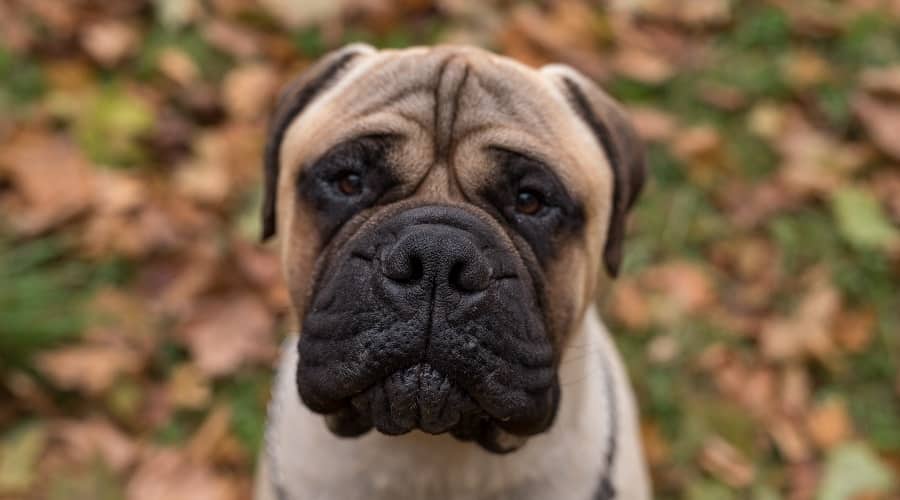
If they are not properly trained early on in life, they can become wary of strangers or even friends of the family who come to your home. Since most dog bites happen with someone that “knows” the dog, it’s not uncommon for a Bullmastiff to find themselves amongst the plotline of statistics when it comes to dog bites.
They are also challenging to train and are known for being less intelligent than other breeds. But with the right family, they can be incredibly sweet and goofy.
5. Cane Corso
The Cane Corso is a very intimidating-looking dog with a large and thick muscular body. Due to their formidable appearance and trainability, they are becoming an increasingly popular breed amongst police forces. Ironically, this breed is considered generally quiet and calm with their family.
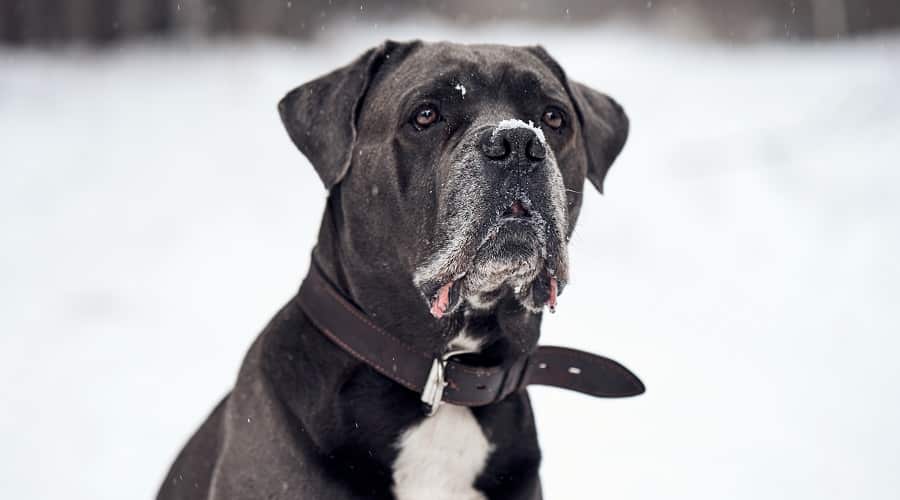
However, they can become aggressive if not trained properly by an experienced owner. Therefore, this breed should not be a choice for first-time dog owners. This ancient Italian mastiff was originally used to protect property and hunt large game, so it comes with a serious instinctual drive.
Confident, territorial, and incredibly powerful, the Cane Corso can make an excellent guardian with the right leadership, but in the wrong hands, it’s a lawsuit waiting to happen. If given the proper environment and socialization, this pup is likely to have a scary appearance, but nothing beyond that.
6. Doberman Pinscher
When asked to picture an intimidating dog, many will conjure the image of a Doberman Pinscher. Makes sense, as this breed has been bred for generations to be menacing guard dogs and has become almost synonymous with our cultural idea of an “aggressive breed.”
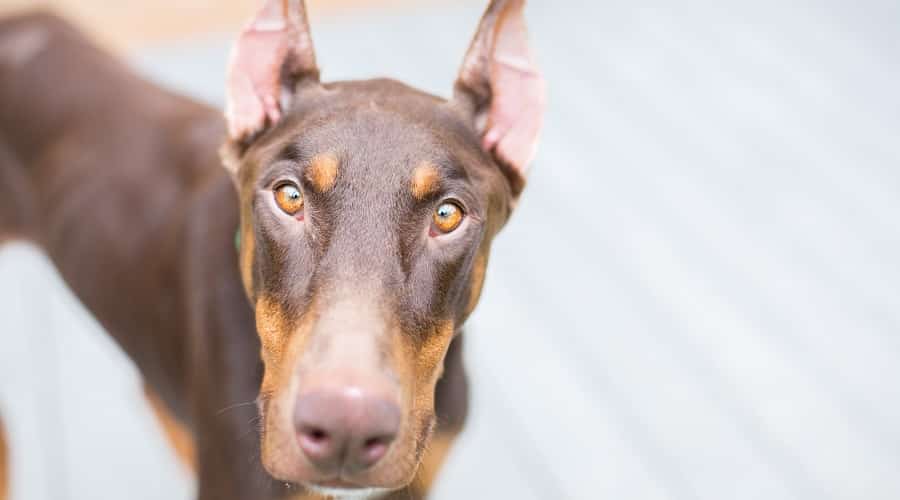
The loyal Doberman has perhaps gotten a bad rap, as they are not a spontaneously violent dog. They will, however, loyally protect their families if they perceive danger.
Extensive socializing and consistent training by experienced owners will produce a well-behaved Doberman Pinscher that is not likely to be more aggressive than any other dog. Like many of the dogs on this list, with their humans, they are sweet and gentle.
7. Dogo Argentino
The Dogo Argentino is a stunning dog: all white and all muscle. This canine is as powerful as it is beautiful. Historically, the Dogo Argentino was bred for big game hunting. They have the capability to take down game such as wild boars.
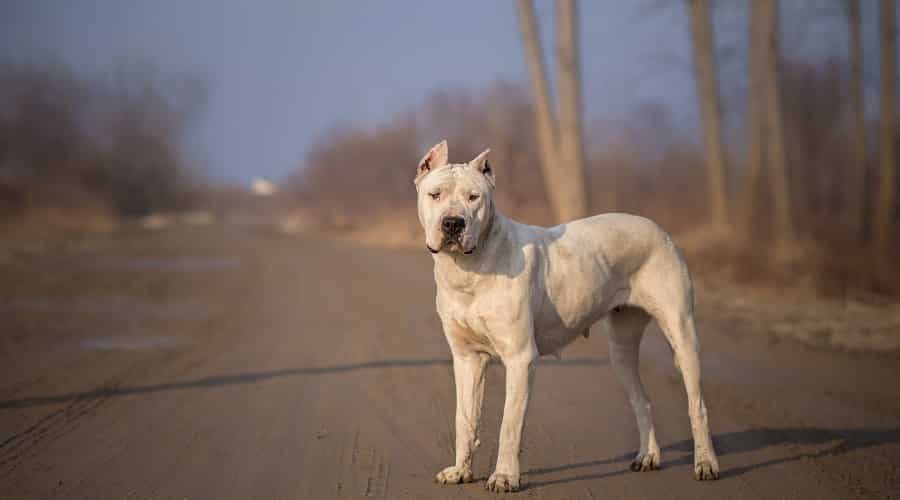
Despite these intimidating accolades, most Dogo Argentino owners report a happy and affectionate pup who is very loving and devoted.
Unfortunately, many countries like the UK have banned this beautiful breed because of perceptions that they are overly aggressive. It is certainly true that a Dogo Argentino should be trained by an experienced handler, or else they can show signs of aggression, but that’s no different than many other breeds.
However, bans such as these perpetuate the idea that certain breeds are innately “bad.” This is certainly not the case for the Dogo Argentino – or any pup, for that matter.
8. Fila Brasileiro
The Fila Brasileiro isn’t just a guard dog; it’s a living, breathing boundary line. Bred in Brazil to track and hold escaped slaves, the Fila has a deeply ingrained instinct to protect and control their environment.
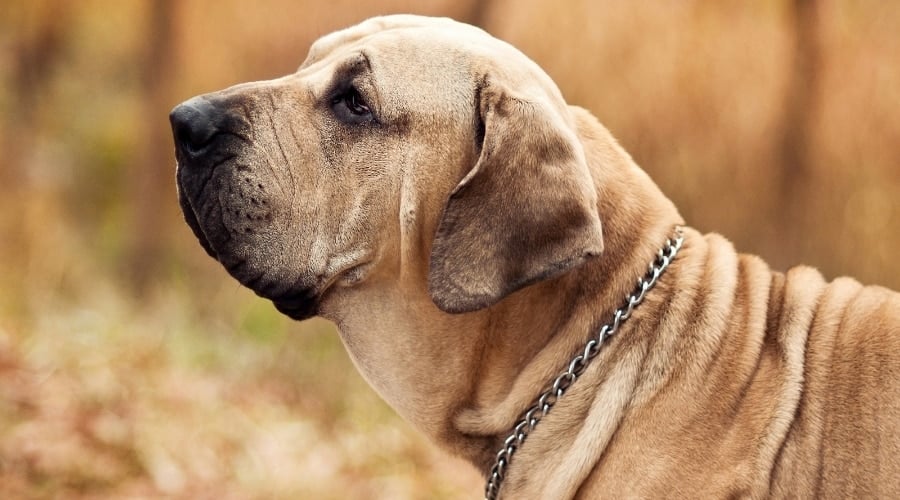
This breed is famously described by the phrase “faithful to family, fierce to strangers”, and that’s no exaggeration. Suspicion of outsiders isn’t just a trait; it’s their entire operating system. Filas bond tightly with their owners but show little tolerance for unfamiliar people, making them a serious liability in the wrong home.
Most major kennel clubs don’t recommend the Fila for average or even experienced dog owners. The breed is banned or heavily restricted in several countries, including the UK, due to their unpredictable reactivity and potential for unprovoked aggression.
Despite their impressive appearance and loyalty to their inner circle, owning a Fila isn’t about “training it out of them”. It’s about managing instincts that were never meant for suburban life. In the hands of a professional handler? A powerful working dog. In the hands of a casual owner? A powder keg.
9. German Shepherd
The wildly popular German Shepherd is a beautiful and powerful breed that has become a favorite working dog for militaries and police forces, along with being a top choice as a beloved family companion.
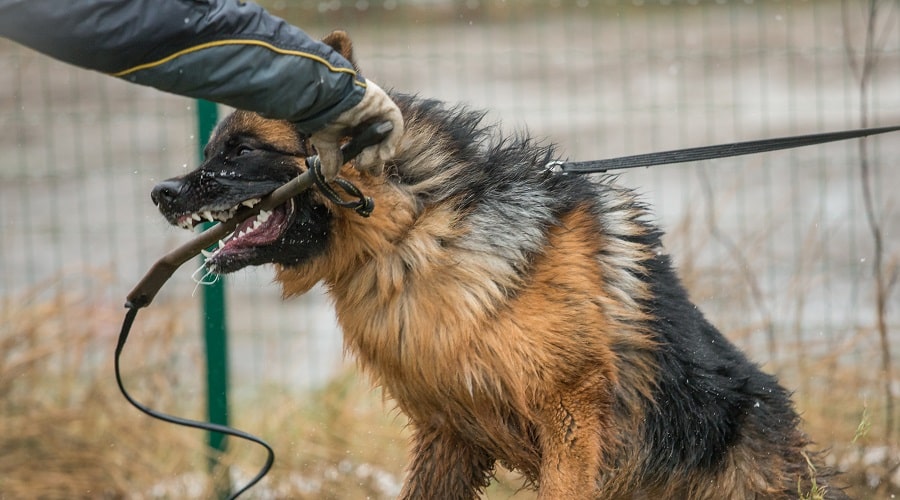
These canines are agile, smart, and fiercely loyal. They are also a highly trainable breed and can perform a wide variety of tasks, which is why they are a popular choice as working dogs.
If they feel their owner is threatened, they will defend them ferociously. This makes the German Shepherd an excellent guard dog. However, they can become territorial and aggressive if not socialized. They can also act out aggressively if they do not receive enough exercise and have pent-up energy to spare.
10. Japanese Tosa
The Japanese Tosa is the heavyweight fighter of the dog world, literally. Originally bred for dog fighting in Japan, the Tosa was designed to be silent, stoic, and incredibly powerful.
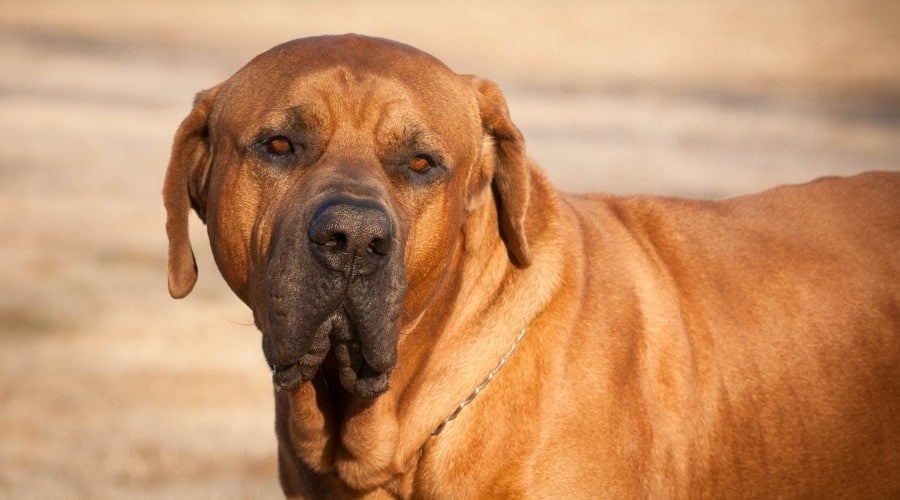
Unlike other breeds that bark or growl during conflict, the Tosa was prized for their calm, emotionless response in the ring. A trait that makes it both fascinating and unnerving today.
Their sheer size, strength, and intense presence have landed them on breed ban lists in several countries, including the UK, Australia, and Denmark. This is why they are seen as one of the most aggressive dog breeds in the world.
Despite their fighting origins, the Tosa can be calm and loyal with their family if raised correctly. But this isn’t a dog for weekend warriors or first-time owners. They’re naturally dominant, and their sometimes aloof temperament means they require unwavering structure, socialization, and respect.
Mishandled, a Tosa is not just difficult; they can be dangerous. It’s not that the breed is born aggressive, but when things go wrong with a Tosa, they can go very wrong.
11. Presa Canario
The Presa Canario looks like they could break through a wall, and honestly, they probably could. Originally bred in the Canary Islands to guard livestock and property, this muscular mastiff is all power, presence, and protective instinct.
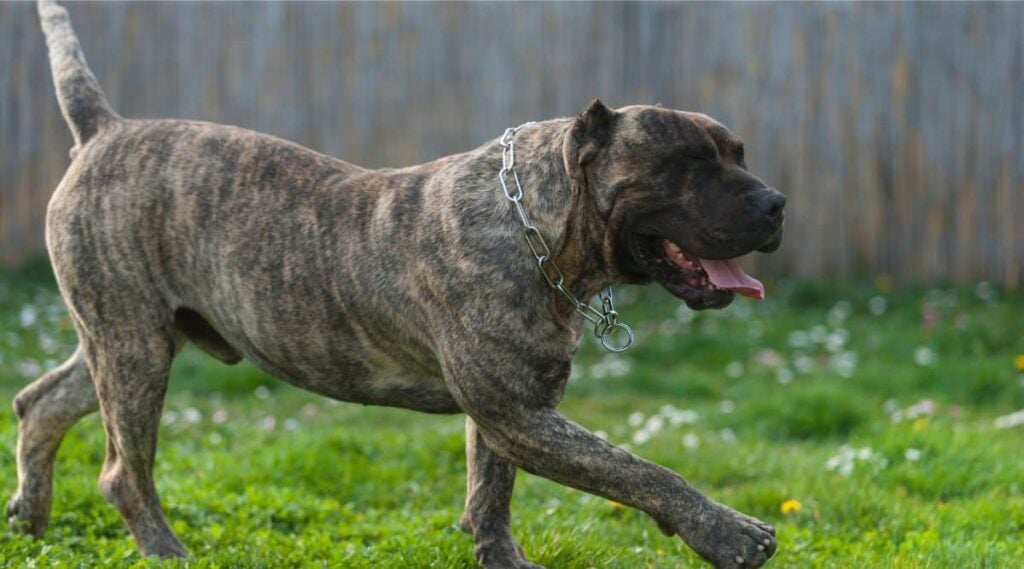
With a massive head, deep bark, and a suspicious nature, the Presa doesn’t back down easily, and they don’t forget a threat. They are one of those aggressive dog breeds that make strangers pause at the gate, and for good reason.
Handled well, the Presa Canario can be a steady, confident guardian, but there’s very little margin for error. Poor socialization, harsh training methods, or neglect can turn this dog into a liability fast. Several high-profile fatal attacks in the U.S. and Europe have kept the breed under legal scrutiny, with bans or restrictions in multiple countries.
They’re not a dog for dominance games, DIY training, or chaotic homes. With firm, experienced ownership, they can be a loyal powerhouse. Without that? They’re trouble waiting to happen.
13. Rottweiler
The Rottweiler is a popular breed choice for those looking for a powerful, loyal breed. They are exceptionally capable guard dogs. This breed certainly has a perception in the media of being a highly aggressive dog.
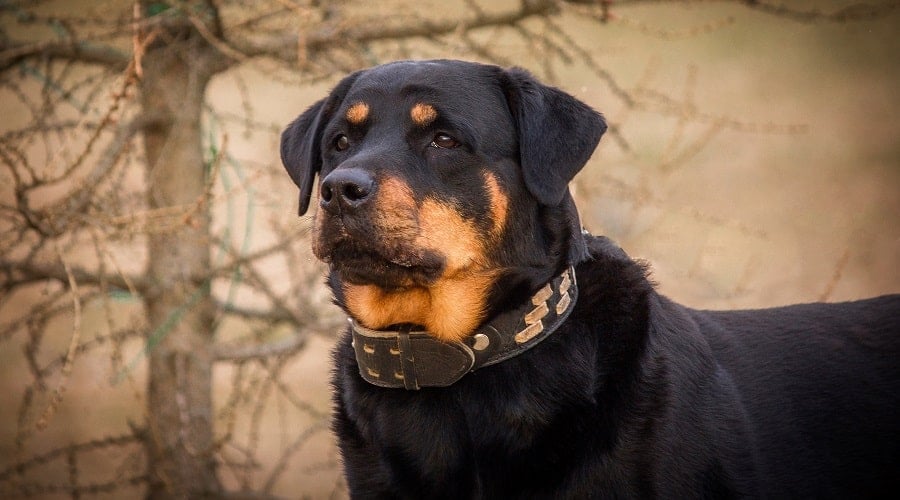
If you own a Rottweiler, it is likely that you are accustomed to people crossing the street when they see you coming. In truth, a well-trained and socialized Rottweiler can make a wonderful family companion.
However, socialization from a young age will be especially important to curb their instinctive territorial aggression. If they are shown kindness, love, and consistent training, you will have an affectionate and devoted pup that is not likely to pose a threat to you or anyone else.
14. Tibetan Mastiff
The Tibetan Mastiff is less of a dog and more of a mythical creature. Towering, lion-maned, and bred to guard Himalayan monasteries from wolves and leopards, this ancient breed has a legendary temperament to match their looks.
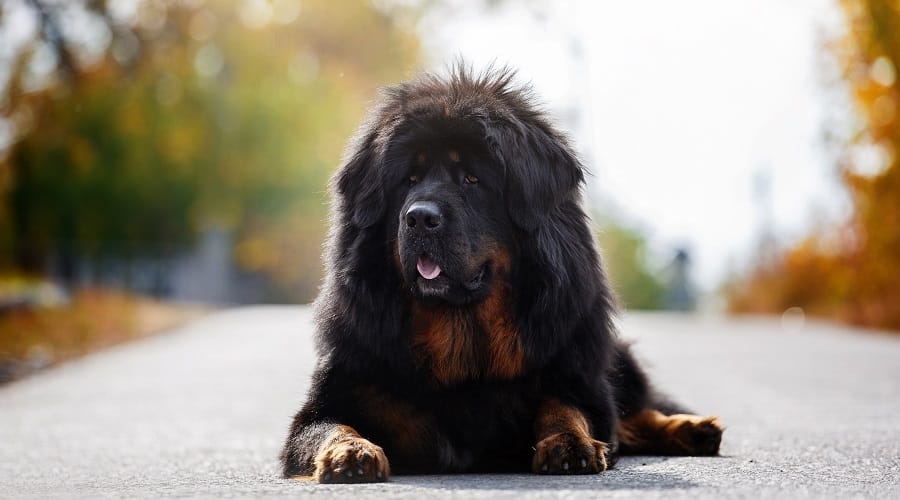
They’re independent, territorial, and often completely uninterested in taking orders. While loyal to their families, Tibetan Mastiffs are notorious for making their own decisions. If they decide someone’s a threat, there’s no negotiating.
This breed is beautiful, rare, and borderline unmanageable in the wrong environment. Tibetan Mastiffs are known for failing temperament tests more often than other breeds, likely due to their aloof, stubborn, and sometimes unpredictable nature.
They’re also banned or restricted in several countries. Without proper containment, early socialization, and strong leadership, a Tibetan Mastiff doesn’t just guard their home; they try to rule it. However, with an experienced family who can dedicate their life to them, they can also make great family pets.
5 Small But Mighty (And Snappy) Pups
They’re tiny, loud, and ready to fight a Great Dane on sight.
These breeds prove that aggression doesn’t come in just one size. They may be cute, but they’ve earned a reputation among vets, groomers, and delivery drivers for being surprisingly spicy.
1. Chihuahua
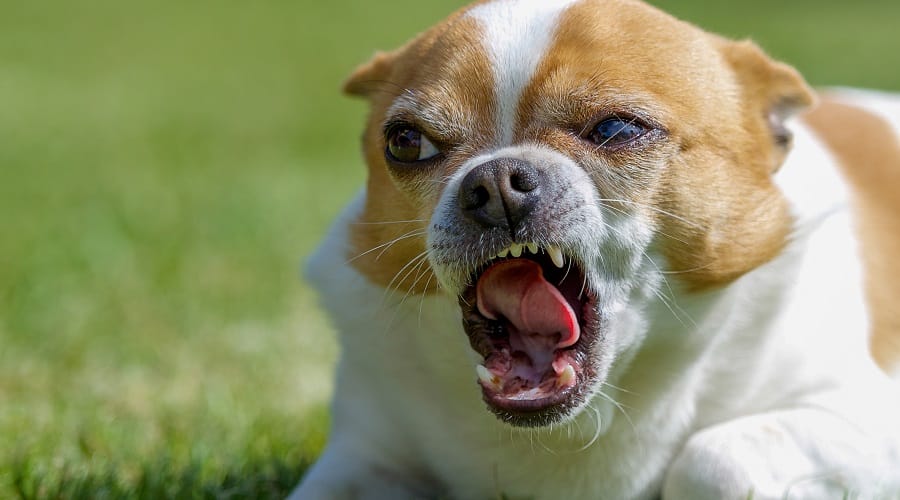
The tiny Chihuahua may not have the formidable stature of some of the others on this list, but that shouldn’t have you underestimate their ferocity. Weighing, on average, under 10 pounds, this lap dog can sometimes be treated more as an accessory than an animal.
Chis have an apple head or a deer head, but the head type doesn’t make them more or less aggressive. And the same goes for their coat, which can be short or long-haired.
By not giving this breed proper boundaries, obedience training, and socialization, they can easily become highly territorial. Chihuahuas won’t hesitate to snap or bite at any unwanted visitors. This behavior is likely a method of self-preservation.
When you are as tiny as a Chihuahua, you need to know how to stand your ground and defend yourself. However, owners who spoil this breed exacerbate this instinct, leading to unwarranted aggression.
The Chihuahua is pretty high up there when it comes to dog bite lists. This has little to do with their genetics. This is far more due to the fact that many owners of small dogs do not correct problem behavior early. Chihuahua aggression will often go unchecked or even encouraged because owners think it’s “cute.”
2. Dachshund
“Small but mighty” is the perfect expression for the bold Dachshund. These little dogs have big personalities. They were originally bred to kill vermin, especially those dwelling in tunnels. Generations of breeding Dachshunds to hunt have resulted in a modern-day pup with a very high prey drive.
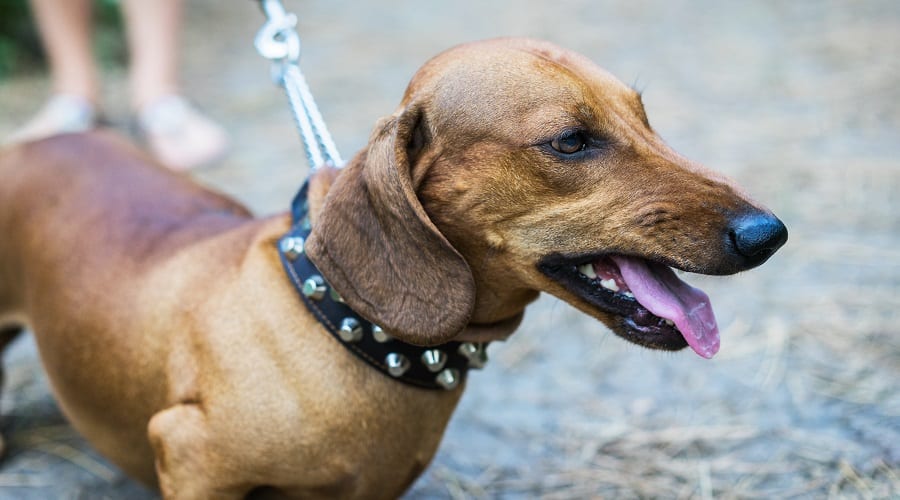
Dachshunds may look like adorable sausage rolls on legs, but their personalities pack serious heat. Originally bred to hunt badgers, they’re bold, vocal, and fiercely territorial.
Without a proper upbringing, these traits can translate into reactivity, stubbornness, and a surprising tendency to snap. Like the Chihuahua, because many Doxie owners let their long and low pup get away with naughty behavior, this side of them can become a real problem.
Despite their size, Dachshunds aren’t shy about guarding their food, toys, or favorite human. They can be clever, loyal companions with proper socialization and consistent boundaries. But underestimate their feisty side, and you might get nipped for your trouble. They are another small breed that finds themself on the naughty bite-often list.
3. Jack Russell Terrier
The Jack Russell Terrier is a 15-pound lightning bolt with a short fuse. Originally bred to chase foxes out of their dens, these dogs haven’t lost an ounce of their prey drive or their attitude.
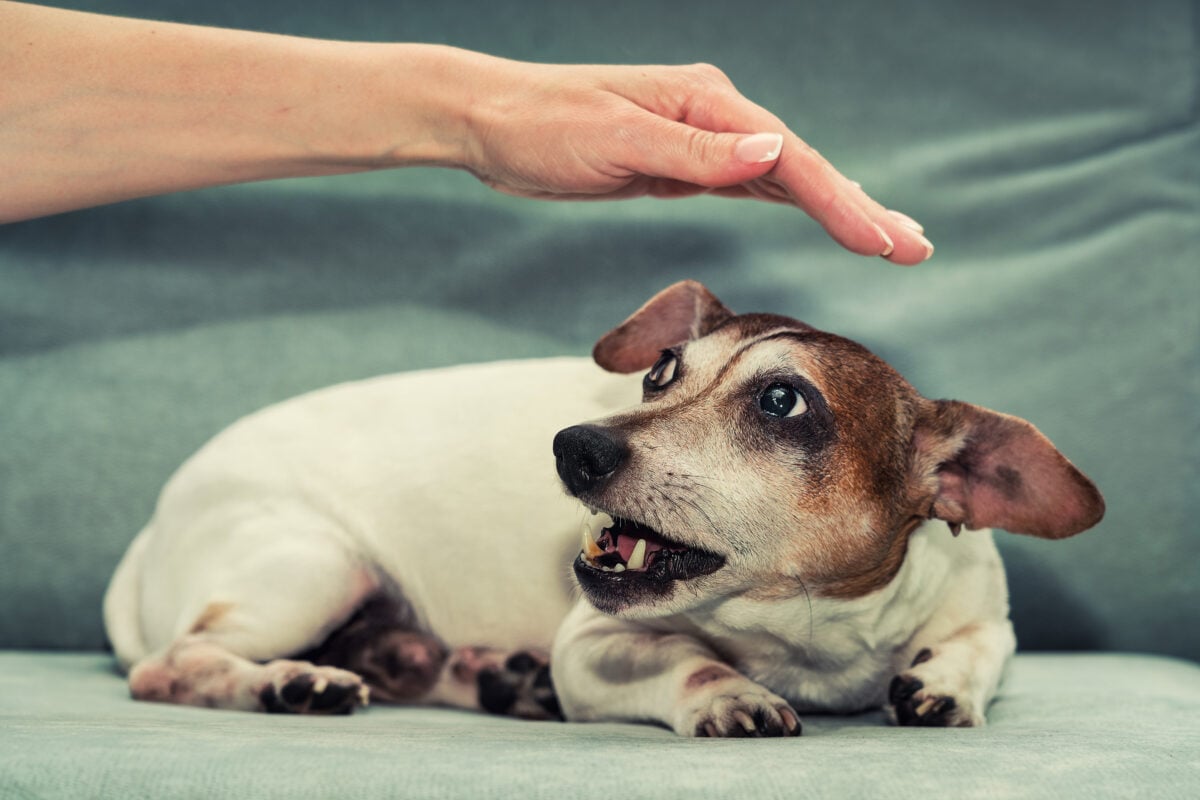
Jack Russells are fearless, energetic, and often totally unbothered by size differences when picking a fight. They’re sharp, reactive, and wildly intelligent, but that combo can quickly turn chaotic without structure.
Owners often underestimate how much stimulation and leadership a Jack Russell needs. Without it, they can become snappy, territorial, and difficult to manage, especially around other pets or kids. They don’t necessarily seek trouble, but they’re rarely the type to back down from it either.
Despite their size, they’ve earned a spot on many vet techs’ “most likely to bite” lists, and once you’ve met a badly behaved one, you’ll understand why.
4. Lhasa Apso
The Lhasa Apso may look like a lapdog, but they were bred to guard ancient Tibetan temples, and they haven’t forgotten it. Underneath that long, flowing coat is a highly alert, independent dog with a low tolerance for nonsense.
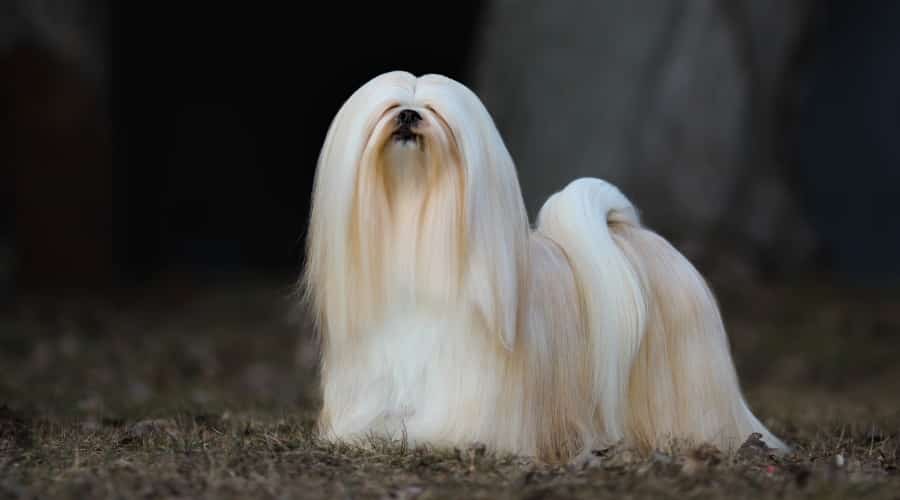
While many people expect them to be cuddly and compliant, Lhasas often have a mind of their own and aren’t afraid to show it, especially if they feel disrespected or cornered.
According to vet surveys, they tend to be suspicious of strangers and quick to assert boundaries, sometimes with their teeth. They come out on top as the breed most likely to bite in vet clinics. Combine that with their tendency to bond tightly with one person, and you have a dog that can turn prickly fast in chaotic households.
Handled well, Lhasa Apsos are loyal, charming watchdogs. But underestimate their toughness, or treat them like a toy, and they’ll remind you they were once temple sentries, not teddy bears.
5. Pomeranian
This adorable and fluffy toy breed is perhaps a surprise to see on a list of the most aggressive dog breeds. However, cute Pomeranians can be quite feisty behind all that fluff. They are notorious for being expensive for such a small package.
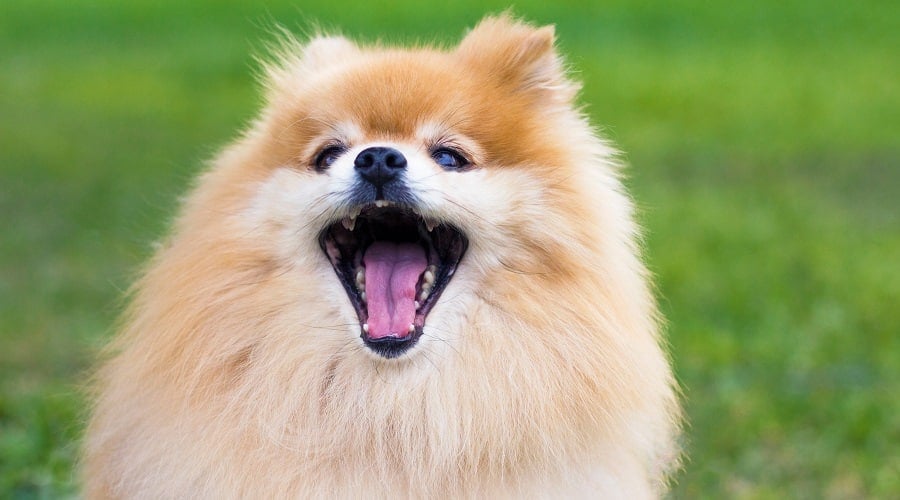
Pomeranians are also known to be territorial and act suspiciously and even aggressively toward strangers. They are especially notorious for their bark – this breed will certainly alert you if someone is approaching.
However, as with most other dogs, the Pomeranian’s defensive and aggressive tendencies can be mitigated by introducing them to many different places, people, and animals while they are still young. Teach Poms their manners from a young age, and they’ll be bouncy and happy like they should be.
4 “Family-Friendly” Breeds With a Bite
Sweet-faced, trusted, and everywhere, but not always as gentle as they seem.
These are the dogs people often assume are safest. But under the wrong conditions, such as stress, poor training, or neglect, even the most popular breeds can snap.
1. Boxer
Boxers have been known to affectionately “box” with their front paws, which is what got them their name in the first place. But did you know that they are often considered one of the more aggressive dog breeds, and some homeowners’ insurance companies won’t insure you if you own one?
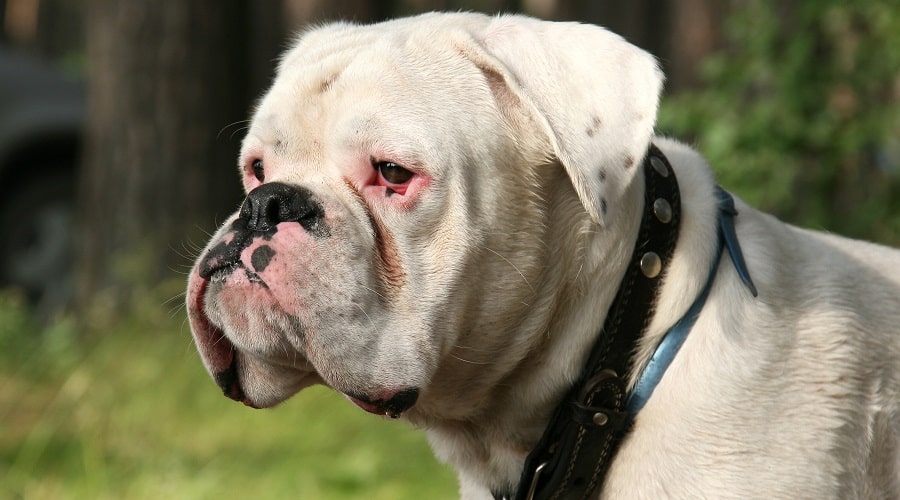
While most boxers are sweet, there are some that have landed on the top 10 list of fatality-causing breeds from 2005 to 2017. For this reason alone, they make our list of the most aggressive and dangerous dogs.
2. Dalmatian
Dalmatians might be Disney-famous, but their real-life temperament is anything but cartoonish. Originally bred as carriage dogs and guard animals, Dalmatians are athletic, intelligent, and naturally protective.

They’re high-energy dogs with strong opinions, and if their needs aren’t met, they’re not shy about letting everyone know. Despite their stylish looks, they can be stubborn, territorial, and prone to reactivity, especially in overstimulating environments.
Many behavior issues in Dalmatians stem from underestimating just how much structure and exercise they require. They don’t do well with boredom, inconsistency, or chaotic home conditions that can lead to barking, snapping, or full-on behavioral meltdowns.
While they can be loving, loyal companions in the right hands, they need experienced, active owners who understand that this breed was built for work, not lounging around a firehouse.
3. English Bulldog
The English Bulldog is often seen as a lazy, lovable couch potato, but that doesn’t mean they’re without attitude. Bred originally for bull-baiting, these dogs have a stubborn streak that still shows through, even under all those wrinkles.

They’re slow to start but quick to stand their ground, especially when pushed or irritated. While they often get labeled as sweet and docile, some can develop guarding behaviors, reactivity, or low-level grumpiness, especially around food, toys, or new people.
English Bulldogs don’t typically go looking for a fight, but they won’t back away from one either. Poor breeding, lack of socialization, and health issues (like chronic pain or breathing trouble) can make them more likely to lash out.
In many cases, they’re incredibly affectionate and goofy with their people, but without structure and awareness of their physical limits, they can become irritable, defensive, and surprisingly tough to manage.
4. Labrador Retriever
Crazy that the Labrador Retriever would make this list, isn’t it? Really, for the Lab, it comes down to a numbers game. Labradors are some of the most highly owned dogs in the United States.
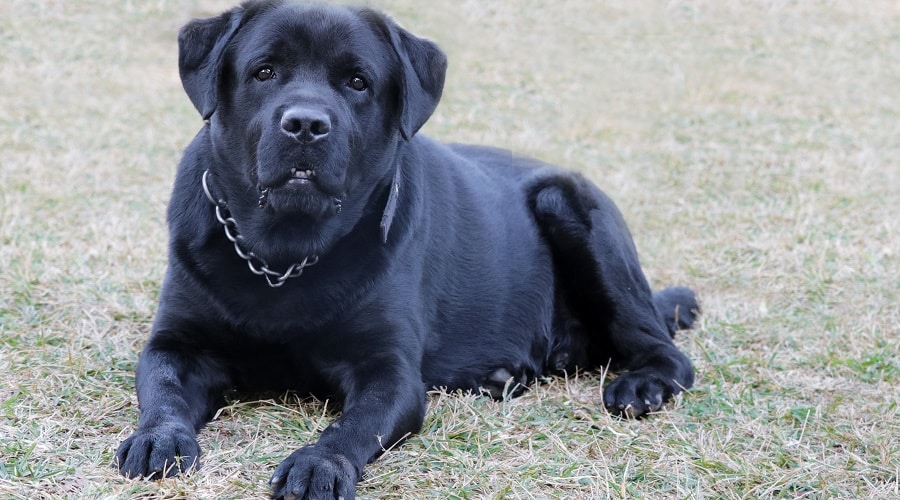
Bigger populations of certain breeds mean that you’ll have a higher chance of someone getting bitten, injured, or maimed by that breed. Similar to the Pitbull and their enormous population size.
While most Labradors are sweet family dogs, just like any breed, they can become hostile if not trained, socialized, and given the proper attention early in their puppyhood. Many Labrador mixes also fall under the breed category of “Labrador,” which makes some dog bite statistics even more unreliable.
7 Wild Cards & Legally Controversial Canines
Rare, ancient, or banned altogether, these breeds don’t follow the usual rules.
Whether it’s genetics, unpredictability, or a history of legal battles, these dogs sit in a gray area between misunderstood and high-risk. Some are loyal companions, and others come with serious responsibility.
1. Bull Terrier
The Bull Terrier is a smart and stocky breed that has a lot of power behind them. Bull Terriers are known for being devoted companions and can be quite affectionate and playful. Sadly, they have a rep for being one of the most aggressive dog breeds in the world.
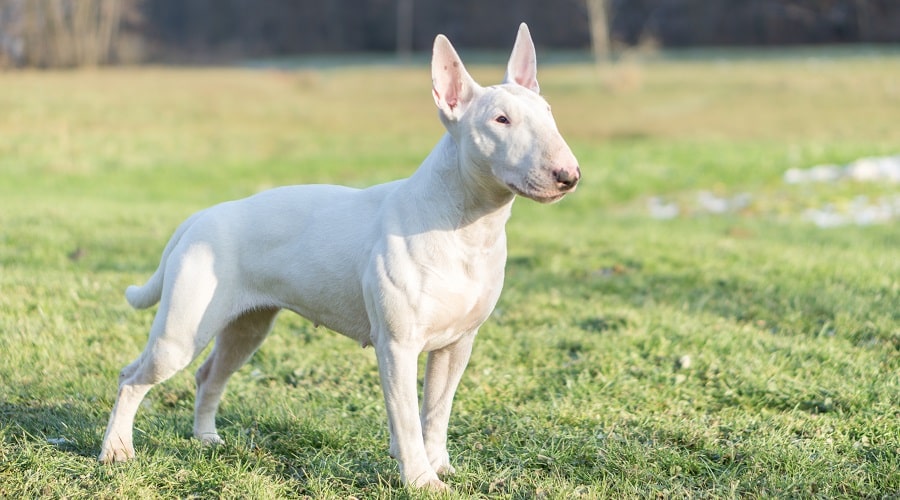
They require consistent, life-long training and socializing coupled with ample exercise to maintain a balanced, happy, and friendly dog. With too much time on their paws, they can act out in destructive and aggressive ways.
Bull Terriers do best with owners who are experienced with their breed and can give them proper discipline and love! One of the main reasons people think of them as aggressive dog breeds is because they look the part, but when raised right, they are one of the biggest softies you’ll ever meet.
2. Chow Chow
The Chow Chow is widely considered to be one of the most dangerous breeds in the world. This perception is mainly due to the fact that they can sometimes turn on their owners – a trait many other pups on this list do not exhibit.
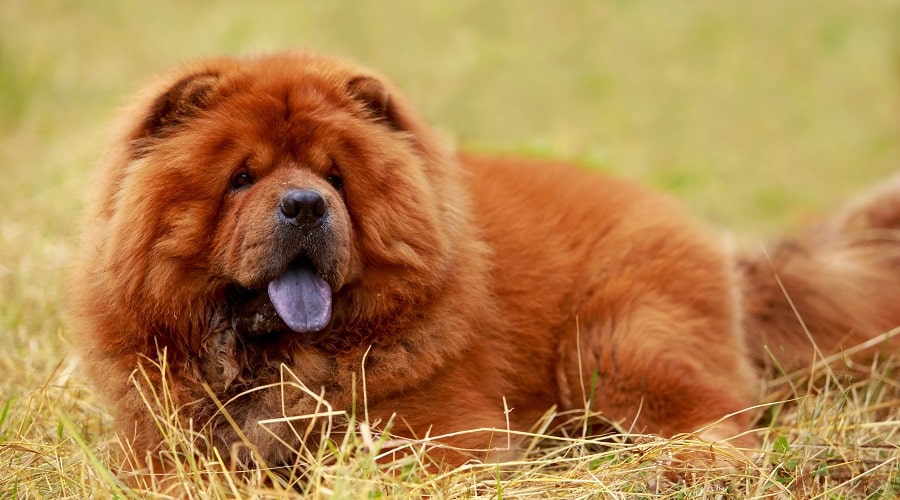
But, it’s important to remember any animal has a level of unpredictability. Those who are familiar with this breed say that their aggression usually stems from boredom.
Therefore, it is especially important to properly exercise and socialize a Chow Chow. They require a confident handler who can assert themselves over this dominant breed.
3. Rhodesian Ridgeback
The Rhodesian Ridgeback is an exceptionally impressive canine. This powerful dog was originally bred to hunt lions and protect African farms from predators. So, there’s no doubt this dog is capable of being ferocious and brutal.
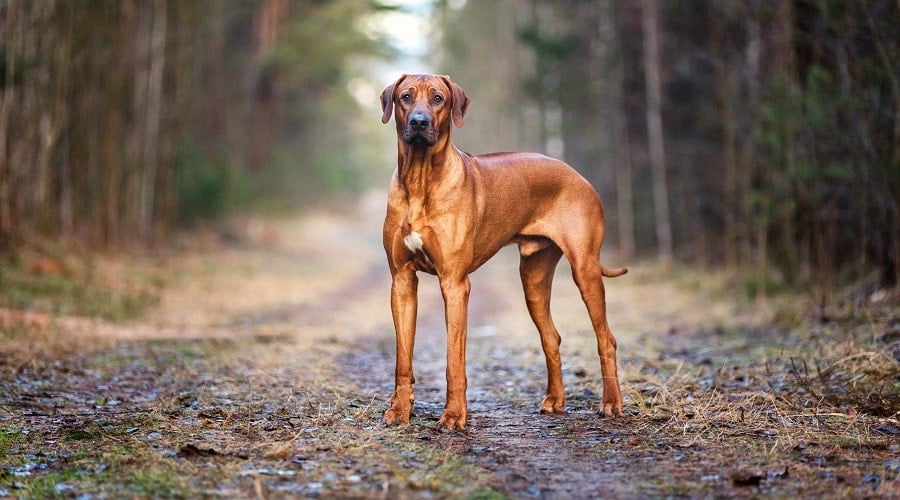
They are known for their speed and prey drive and are considered by some to be quite a dangerous breed. However, many Rhodesian Ridgebacks are beloved family companions whose owners report being gentle and loving.
Still, they need a lot of training and exercise to get there. So, anyone looking to adopt a Ridgeback should be willing to make that commitment and should probably not reside in any sort of confined space.
4. Shar Pei
The Shar Pei is a Chinese breed with a short, wrinkled coat. They remain somewhat of a rare breed in America. Unfortunately, this breed has been the desired choice for dog fighting rings in China.
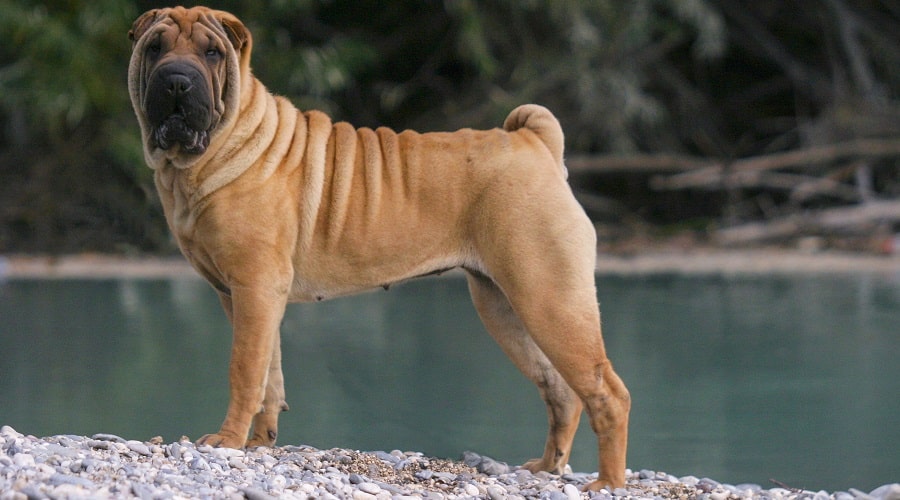
They were, and sometimes still are, bred for their aggression. A trait that has been passed down through the generations.
Shar Peis are naturally independent, strong-willed, and territorial animals. They require firm, kind, and consistent training with an owner who is both patient and dedicated to properly socializing them. Just because a breed is built well for fighting does not mean they will fight, nor should they.
5. Shiba Inu
Shiba Inus are known for their seemingly endless energy and somewhat “cat-like” dispositions. They are often aloof and independent. Female Shibas can be especially territorial with other animals. One should be vigilant when heading to the dog park with a Shiba to ensure they don’t start any fights.
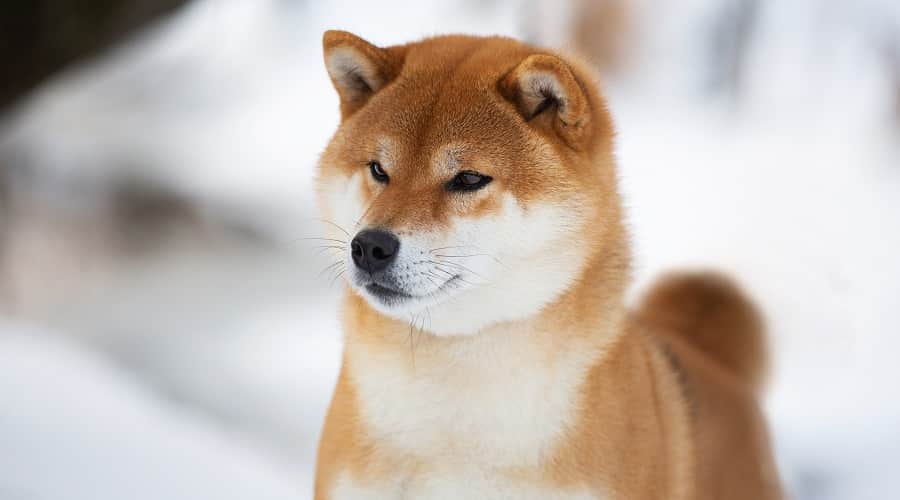
They have a high prey drive and prefer to be dominant in the pack. Therefore, they need a strong leader who enforces boundaries, socializes them regularly, and not afraid of owning one of these aggressive dog breeds.
Also, make sure to frequently exercise a Shiba Inu, as with many dogs, if they have too much energy, they are likely to get into trouble.
6. Siberian Husky
This one may surprise you. Believe it or not, the Siberian Husky isn’t always just a ball of fluff that loves everyone they come into contact with. Huskies are ranked among the top 10 dog breeds that caused fatalities from 2005 to 2017.
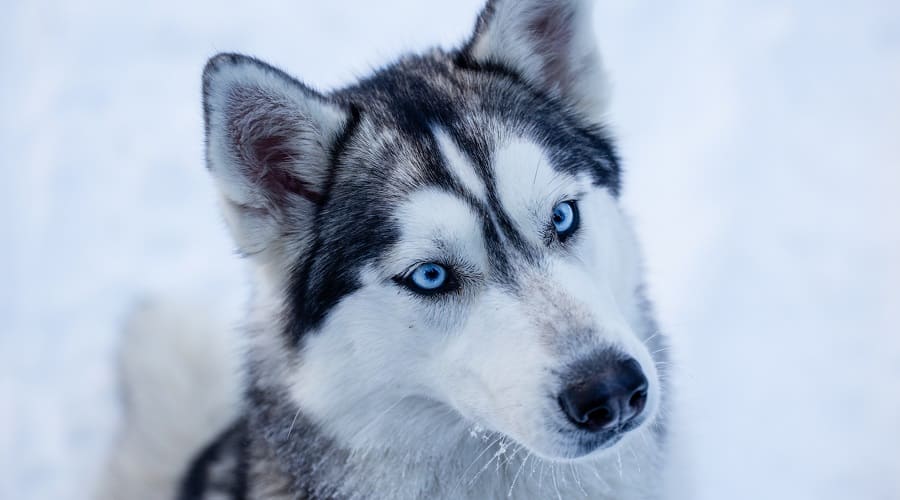
It’s hard to know if these were all purebred Huskies or just some type of husky mix that was responsible for the fatalities. While this number is not nearly as high as other breeds, it’s still high enough to land them on the list of the most dangerous dog breeds.
The Husky is usually a fantastic companion for an active family if correctly socialized. However, if they are not socialized properly, they can become overly protective of their family.
7. Wolfdog
With a name like Wolfdog, it’s not surprising that this canine strikes the mind with images of violent wolf packs hunting innocent prey. It is certainly true that this breed has an exceptionally high prey drive.
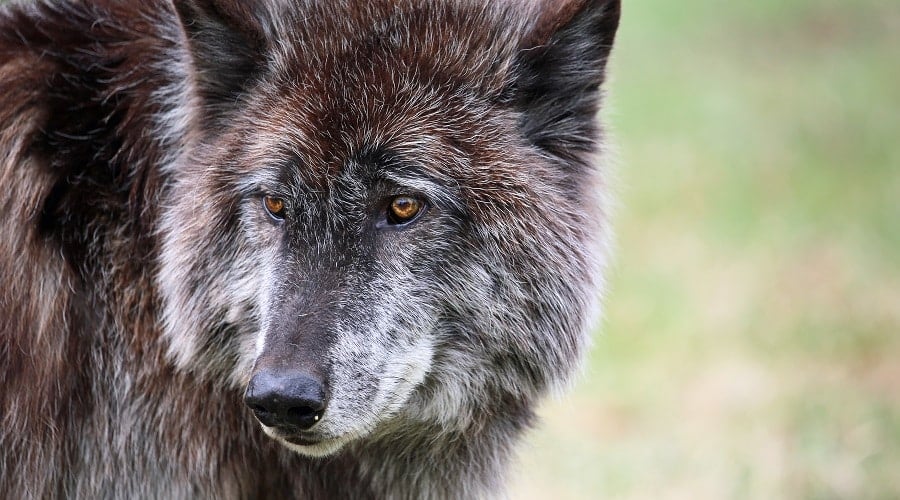
Experts claim this breed still exhibits many of the wild tendencies and aggression of their ancestors, which can lead to quite a bit of unpredictability from a Wolfdog. They must be exercised extensively to help burn off excess energy, which can lead to a Wolfdog engaging in their own “hunts.”
This is not a breed for first-time owners, and they require a strong leader and consistent training. There are plenty of other dog breeds that look like wolves with milder temperaments if wolfy looks are your thing.
It’s important to know that some states ban them outright, while others regulate them as wild animals, requiring permits and specific housing. This breed is not your average doggo, but one that should be handled with extreme caution.
Things To Remember With Aggressive Dog Breeds
Some breeds are inherently more aggressive than others, and some can do a lot more damage than others, too. In some cases, aggressiveness can be a combination of nature and nurture. Pitbulls are always at the top of the list of dogs that have bitten or attacked the most people.
These pups get a bad reputation due to owners who train them to fight or do not socialize them properly. And according to Statista, dogs (after mosquitoes and snakes) are the third most deadly animal to humans worldwide.
Stop Blaming The Breed – Start Training The Owner
It also just so happens that many awful dog owners end up owning large breeds that are strong-willed. This can cause behavioral problems in their environment, leading to undesired aggression. There has long been debate over dog breeds considered aggressive.
Irresponsible ownership leads to aggression and dog bites, often leading to breed-specific legislation and banned breed lists being implemented.
But one thing is clear and common in the aggressive dog breeds debate…
Despite what the internet or those Pitbull-trolls might tell you, science doesn’t back up the idea that a dog’s breed alone determines its aggression or likelihood to bite.
Organizations like the AVMA and CDC, as well as multiple studies, have found no consistent link between breed and risk.
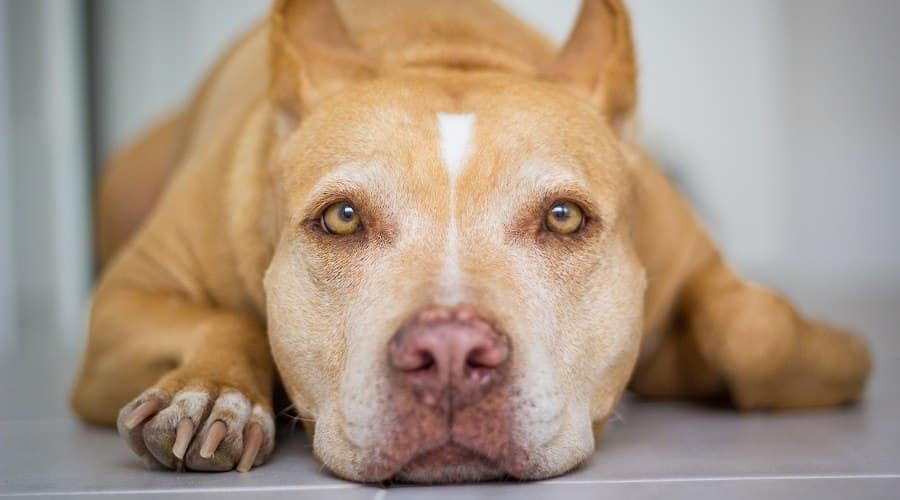
And while every fatal dog attack is tragic, most are tied to human-controlled factors, like lack of supervision, poor training, unsafe environments, breed population, and owner community. Not the dog’s DNA.
But Aggression Isn’t Inevitable
Of course, breed tendencies aren’t destiny. With the right environment, consistent training, and early socialization, any dog, regardless of breed, can grow into a polite, stable, and loving companion.
What matters most isn’t the size of their jaws or the shape of their head, it’s the structure they’re given, the energy they’re allowed to burn, and the guidance they receive from the humans around them. Even the so-called “scariest” breeds can thrive in calm, responsible households. Just like the “cutest” can turn cranky if mishandled.
5 Tips For Managing Canine Aggression
- Owners can prevent bites and aggressive behavior by properly training their dogs from a young age. Seek out the assistance of a trainer early in the process to ensure things are being done properly and not in a way that will encourage this behavior.
- Properly socialize dogs young and instill obedience training and expectations.
- Educate family members, neighbors, and those who are around the dog about aggression and how to engage with the pup in a non-threatening way.
- Avoid risky situations by keeping your dog on a leash, not letting them outside unsupervised, and constantly modeling expected behavior.
- Pay attention to your dog’s surroundings, mood, and body language. If you notice your pup getting their guard up, it is time to engage in calming behaviors, even if that means removing yourself and your pup from a situation.
FAQs About Aggressive Dog Breeds
Got questions about aggressive dog breeds that we didn’t cover above? You’re not alone. This topic brings out strong opinions, surprising facts, and plenty of debate. Below are answers to some of the most frequently asked questions we hear.
Still curious? Drop your question in the comments, we’ll answer it and might add it to this list.
What Is the Most Aggressive Dog Breed in the World?
Wolf hybrids are often cited as the most aggressive dogs on record. These animals are part wolf, either directly or through several generations of breeding, and retain many wild traits, including high prey drive and unpredictability.
While some wolf hybrids can show domestic behavior, they tend to remain unpredictable and potentially dangerous, even with training.
Are All Aggressive Dogs Dangerous?
Not necessarily. Aggression doesn’t always equal high danger. For example, Chihuahuas are known for being feisty, but their small size means they pose less physical risk.
With proper training, structure, and lifelong socialization, many so-called aggressive breeds can become loving, well-behaved pets. However, some breeds may retain natural intensity, depending on genetics, upbringing, and environment.
What Dog Breeds Bite Humans the Most?
According to data from DogsBite, Pit Bulls were involved in 60% of fatal dog attacks. Mixed breeds followed at 13%, and Rottweilers at 8%. Other breeds that appeared in fatal bite statistics included Boxers, Australian Cattle Dogs, German Shepherds, and some unidentified dogs, each around 4%.
What Is the Best Way to Handle an Aggressive Dog?
Approach aggressive dogs with calm, caution, and consistency. Avoid escalating the situation. Instead, focus on early socialization, professional training, and behavior modification techniques like desensitization.
Leash discipline and structured obedience work are essential, especially for breeds prone to reactivity. Sometimes, rehoming aggressive dog breeds is necessary for everyone’s safety, including the dogs.
What Should I Do If My Dog Suddenly Becomes Aggressive?
If your dog shows sudden or unusual aggression, the first step is to rule out any medical issues. Pain, neurological problems, or illness can cause behavior changes.
Talk to your veterinarian to check for underlying health concerns. If your dog is medically healthy, consider working with a professional trainer or veterinary behaviorist.
In some cases, your vet may recommend medication to help manage aggression, especially if it’s anxiety-driven. Always give your dog space during reactive moments, avoid punishment, and reduce exposure to known triggers while you work on behavior strategies.
What Types of Aggression Can Dogs Show?
Canine aggression isn’t one-size-fits-all. Most dogs aren’t aggressive all the time, there are many different types, each triggered by different situations. These include leash aggression, fence aggression, social aggression, pain-induced aggression, frustration, learned behaviors, fear-based aggression, redirected aggression, resource guarding, territorial aggression, predatory behavior, and protective aggression.
While some breeds may have a genetic predisposition toward certain behaviors, any dog can become aggressive if they feel scared, threatened, or mistreated. Understanding the type of aggression is key to handling it correctly and compassionately.
Want a Safer, Happier Dog? Start with the Basics
Aggression starts with stress, and prevention starts with good care. Make sure your dog gets annual vet visits. They’re key to catching pain, illness, or behavioral shifts early.
Feed them a high-quality diet to support brain function, energy levels, and overall mood. Use interactive toys to keep their mind stimulated and boredom at bay (a tired dog is a good dog). And don’t forget: pet insurance can be a lifesaver when unexpected health issues pop up.
Have you lived with a dog that defied its breed’s reputation, or matched it a little too well? Whether your Chihuahua thinks they’re a guard dog or your Rottweiler is a total marshmallow, we want to hear your story. Drop your thoughts, questions, or experiences in the comments below. Let’s get the controversial canine chat flowing…



